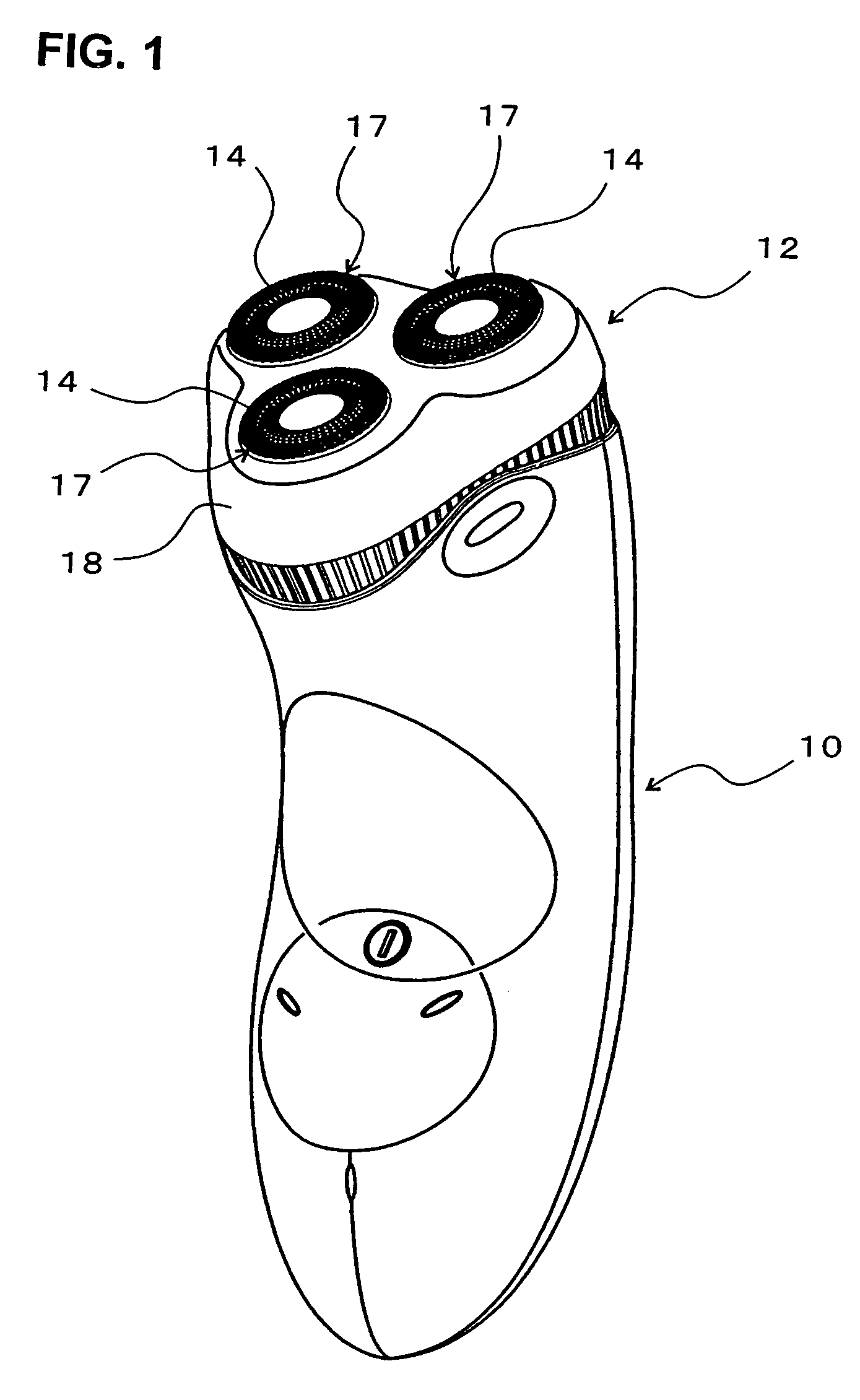Rotary type electric shaver
a rotary type, electric shaver technology, applied in the direction of metal working devices, etc., can solve the problems of insufficient shaving depth, inability to cut hair deep enough, poor shaving performance, etc., to prevent over-deep shaving, reduce shaving difficulty, and reduce shaving difficulty
- Summary
- Abstract
- Description
- Claims
- Application Information
AI Technical Summary
Benefits of technology
Problems solved by technology
Method used
Image
Examples
Embodiment Construction
[0032]In FIG. 1, the reference numeral 10 is a shaver main body, and 12 is a cutter head openably or detachably mounted on the shaver main body 10. Three cutter units 17 each comprising an outer cutter 14 and an inner cutter 16 (see FIG. 3) are provided in the cutter head 12. The outer cutters 14 of the three cutter units 17 are positioned with their centers at the vertices of an equilateral triangle.
[0033]The cutter head 12 includes an outer cutter housing 18 that is openable or detachable upward relative to the shaver main body 10, and the outer cutters 14 are installed in three outer cutter installation holes formed in the outer cutter housing 18. Each cutter unit 17 that includes the outer cutter 14 is upwardly urged; in other words, it is urged in the direction that the outer cutter 14 projects upward in FIG. 1.
[0034]As seen from FIGS. 2 and 3, the outer cutter 14, which is made of metal, is in substantially a shallow bowl shape. The top portion of the outer cutter 14 is circul...
PUM
 Login to View More
Login to View More Abstract
Description
Claims
Application Information
 Login to View More
Login to View More - R&D
- Intellectual Property
- Life Sciences
- Materials
- Tech Scout
- Unparalleled Data Quality
- Higher Quality Content
- 60% Fewer Hallucinations
Browse by: Latest US Patents, China's latest patents, Technical Efficacy Thesaurus, Application Domain, Technology Topic, Popular Technical Reports.
© 2025 PatSnap. All rights reserved.Legal|Privacy policy|Modern Slavery Act Transparency Statement|Sitemap|About US| Contact US: help@patsnap.com



